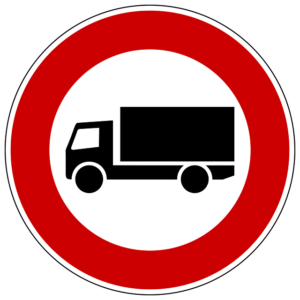
As the limited truck ban in Navotas City is set to start in January, domestic shipping lines are requesting the city government to implement instead a traffic rerouting plan with a designated 24-hour single lane for trucks to avoid an anticipated port congestion.
Philippine Liner Shipping Association (PLSA), in a letter to Navotas City mayor Tobias Tiangco dated December 18, is proposing an industry-wide consultation “to come up with a traffic re-routing plan designating a 24-hour single truck lane westbound from C-3 (Circumferential Road 3) to R-10 (Road 10) to North Bay Boulevard and vice versa.”
To be part of the consultation are key officers of port users, including foreign and domestic shipping lines, consumer groups, cargo owner groups, forwarders, customs brokers, and truckers’ groups serving Manila ports, together with concerned government agencies and NLEX Corporation.
PLSA, members of which include major domestic shipping lines, said the traffic rerouting plan proposed by NLEX Harbor Link concessionaire NLEX Corp. “has not been subject to consultation, nor conferred with the concerned/affected port users.”
READ: Fearing congestion, port stakeholders seek recall of Navotas truck ban
Navotas City mayor Tobias Tiangco signed on November 28 Executive Order (EO) No. TMT-029 series of 2019, which implements from January 1, 2020 a limited truck ban along C-3 Road, Road 10 (R-10), and North Bay Boulevard from 6 a.m. to 10 a.m. and from 4 p.m. to 8 p.m.
The truck ban aims to lessen the expected heavy traffic stemming from the construction of the North Luzon Expressway (NLEX) Harbor Link Segment 10 from C-3 to R-10 and the Department of Public Works and Highways’ Reinforced Concrete Box Culvert on North Bay Boulevard.
PLSA said that while it appreciates and supports the efforts of the Navotas City government to improve traffic flow in the port area and underlying areas traversing Navotas to hasten the ongoing construction of the two road infrastructure projects, the limited truck ban “will limit truck moves and surely impede the flow of trade passing through C-3, R-10, and North Bay Boulevard inbound and outbound foreign and domestic trade.”
PLSA noted that a strategic portion of the covered roads serves as “a vital link for trucks coming from the north to Manila.”
It added that Manila is home to three ports—the international terminals Manila South Harbor (MSH) and Manila International Container Terminal (MICT), and domestic port Manila North Harbor—that serve as the country’s “centers of global and domestic economy.”
PLSA said the ban will limit truck access to the northern route to only 14 hours compared to the current 24-hour access.
“With lessened truck turn-arounds, truckers will be constrained to impose an increase in truck rates, eventually passed on to consumer goods/consumers,” PLSA pointed out.
Aside from PLSA, other port stakeholder groups, including the Association of International Shipping Lines, have already submitted their letters to Tiangco, requesting, on the other hand, for the limited truck ban to be suspended as it would significantly constrict the flow of trade and cause a repeat of the 2014 port congestion.
Aside from the Manila ports, the Container Depot Alliance of the Philippines earlier noted that the truck ban would also affect deliveries to and from container depots situated within the CAMANAVA (Caloocan, Malabon, Navotas, Valenzuela) area, which could affect the return of empty containers and “pose a very serious problem for local shippers whenever they need empty containers to stuff their export shipments.” – Roumina Pablo
